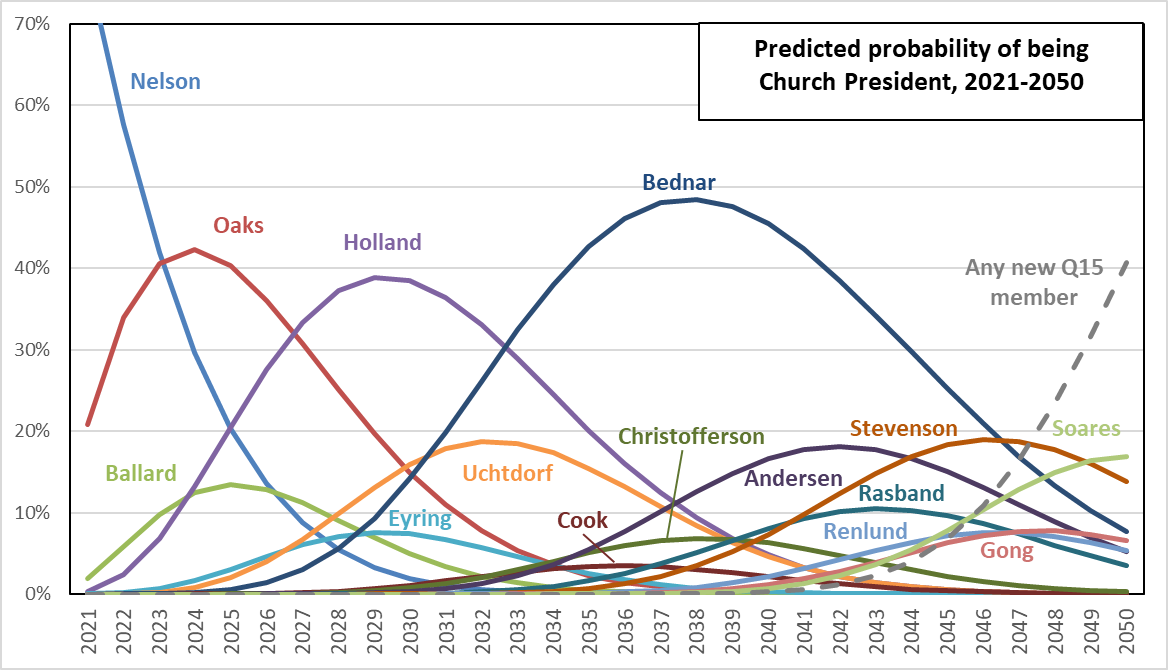Note: In the original version of this post, I had Elders Gong and Soares out of order at the bottom of the graph. Thanks to Jim, who commented on the previous post to point out the problem, I’ve now fixed it.
While I was working on my last post about each Q15 member’s probability of becoming Church President, I realized that I could look at the question a different way. Rather than calculating probability, I could work out how long each member would have to live in order to outlive everyone senior to him. For those much younger than those senior to them, this will be a relatively young age; for those close in age or perhaps even older than those senior to them, this will be a greater age. I know probability answers the question of who’s likely to make the top spot more directly, but I like the vividness of the how long would he have to live question.
Using the same method I used in the last post (see the Method section below for details), I calculated the life expectancy for each current Q15 member from the SOA mortality table I’ve been using. Then it was straightforward to also find, for each member, the longest remaining life expectancy of any other member senior to him, and from that, the age he would have to reach to become Church President.
I thought it would also be fun to look at needed life expectancy to become Church President for past Q15 members. This is even easier to calculate, as everyone’s lifespan is already known, so there are no life expectancy calculations required. For each member, I just noted the latest death date of anyone senior to him, and subtracted the member’s birthday to get the age he needed to reach to become Church President.
The graph below shows life expectancy needed to reach the presidency for all Q15 members back to Heber J. Grant. It’s a little busy, so let me walk you through what’s in it.
- Fatter bars with lighter shading show needed life expectancy to become Church President.
- Skinnier bars with darker shading show actual lifespan (or current age for living members).
- Outlined white bars tacked on the skinny bars for living members show remaining life expectancy.
- Gray and black bars give actual, known values.
- Blue bars are based on at least some life expectancy estimation.
- Note that the graph cuts off the ages 0 to 20 to focus better on the ages where there are differences.


